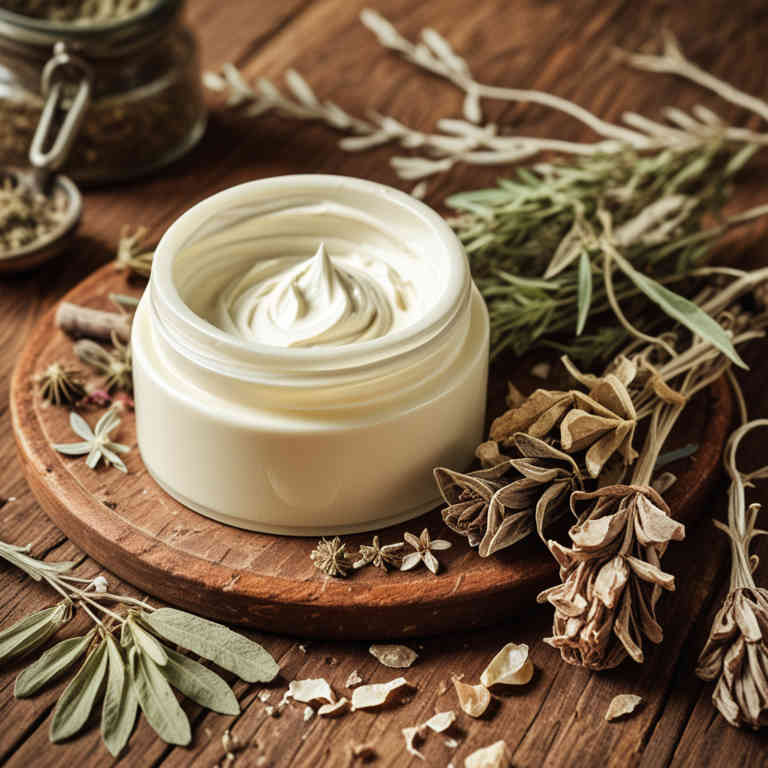Glycyrrhiza glabra cream for medicinal use

Glycyrrhiza glabra cream is a topical preparation made from the root of the licorice plant, known for its anti-inflammatory and soothing properties.
It is commonly used in herbalism to treat skin conditions such as eczema, psoriasis, and minor irritations due to its ability to reduce inflammation and promote healing. The cream may also help alleviate symptoms of respiratory conditions when applied externally, though it is not a substitute for internal treatments. It is often combined with other herbs to enhance its therapeutic effects.
However, prolonged use should be avoided as it may cause side effects like hypertension.
Uses
Glycyrrhiza glabra cream has been used to treat a variety of skin conditions and inflammatory disorders due to its anti-inflammatory and soothing properties.
Historically, it has been utilized in traditional Chinese and Ayurvedic medicine for its ability to heal wounds and reduce irritation. In modern times, it is commonly found in over-the-counter topical treatments for eczema, psoriasis, and even as a remedy for minor burns and rashes. The active compound, glycyrrhizin, is believed to contribute to its therapeutic effects by modulating the immune response and reducing inflammation.
Its versatility and effectiveness have made it a popular ingredient in both traditional and contemporary herbal skincare formulations.
Benefits
Glycyrrhiza glabra cream has health benefits such as reducing inflammation, soothing skin irritations, and promoting healing.
It contains glycyrrhizin, which has potent anti-inflammatory and antiviral properties. This cream is often used to treat conditions like eczema, psoriasis, and minor burns due to its calming effect on the skin. It may also help alleviate symptoms of respiratory infections when applied topically.
However, long-term use should be monitored, as it can have side effects like increased blood pressure.
Constituents
Glycyrrhiza glabra cream active constituents include glycyrrhizin, flavonoids, saponins, and alkaloids.
These compounds contribute to the cream's anti-inflammatory, antiviral, and antimicrobial properties. Glycyrrhizin, the primary active component, is known for its ability to modulate the immune system and reduce inflammation. Flavonoids provide antioxidant support, while saponins may help in skin repair and hydration.
This herbal preparation is often used topically to soothe skin conditions such as eczema, psoriasis, and minor irritations.
Preparation
To make Glycyrrhiza glabra cream, start by grinding 100 grams of dried licorice root into a fine powder.
In a saucepan, combine the licorice powder with 500 ml of water and bring it to a gentle simmer, allowing it to steep for 30 minutes. Strain the liquid through a fine mesh strainer or cheesecloth to remove any solids. Next, mix the infused liquid with 200 grams of beeswax and 500 grams of coconut oil over low heat, stirring continuously until the mixture is smooth and well combined.
Finally, transfer the cream to a sterilized jar and let it cool completely before use.
Side Effects
Glycyrrhiza glabra cream may lead to increased sodium retention and potassium loss, which can result in hypertension and hypokalemia.
It may also cause fluid retention, leading to edema, and in some cases, it can contribute to the development of Cushing's syndrome due to its corticosteroid-like effects. Long-term use can disrupt the body's natural balance of hormones, potentially affecting the adrenal glands. Individuals with hypertension, heart disease, or kidney problems should use this cream with caution.
It is important to consult a healthcare professional before using Glycyrrhiza glabra cream, especially for prolonged periods or in high concentrations.